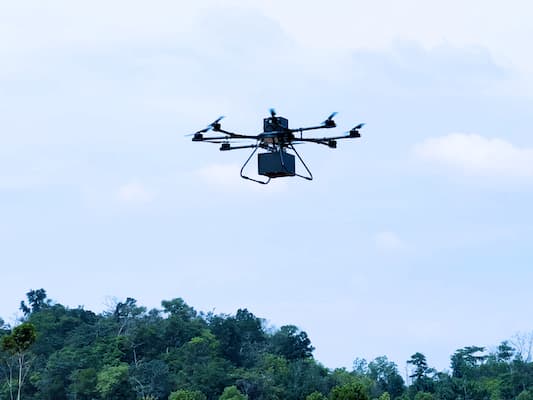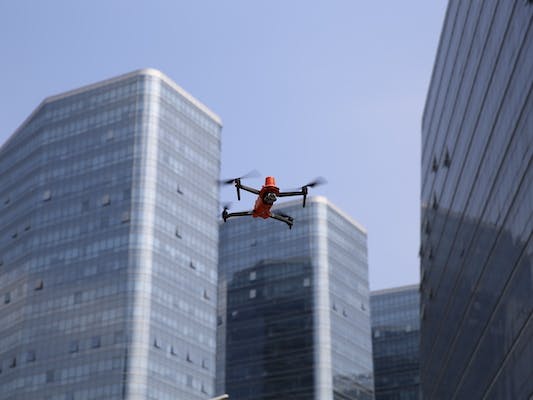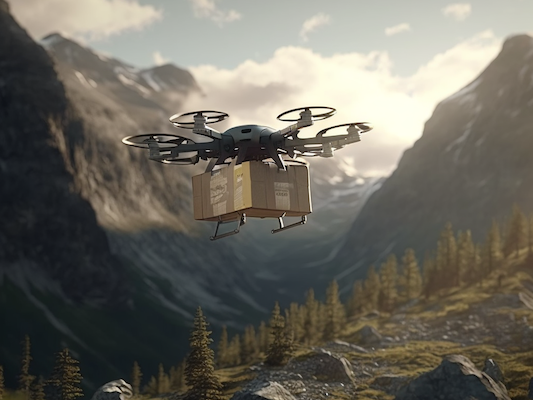Published April 25, 2023
The Rise of Autonomous Drones: A Look at the Latest Developments
Autonomous drones are on the rise, with new developments emerging. Keep up with the latest technology advancements in this field.

Drones have become a game-changing technology in many industries, and with the rise of autonomous drones, the possibilities for their use are endless. Autonomous drones are unmanned aerial vehicles (UAVs) that can operate without human intervention. They are designed to fly, navigate, and make decisions on their own, using advanced sensors and artificial intelligence (AI) algorithms. In this article, we will explore the latest developments in autonomous drones and their potential applications.
Drones have come a long way since their inception, and their applications have expanded to various industries such as agriculture, construction, and logistics. The rise of autonomous drones has the potential to revolutionize these industries by increasing efficiency, reducing costs, and improving safety.
The Technology Behind Autonomous Drones
Autonomous drones are equipped with various sensors such as GPS, lidar, and cameras to gather information about their surroundings. This information is then processed by onboard computers that use AI algorithms to make decisions and navigate the drone. The AI algorithms can recognize objects, avoid obstacles, and follow predetermined flight paths.
Applications of Autonomous Drones
Agriculture
Autonomous drones can be used in agriculture to monitor crops, collect data on soil conditions, and spray pesticides or fertilizers. They can also be used to plant seeds with high accuracy and precision, reducing waste and improving crop yields.
Construction
Autonomous drones can be used in construction to inspect buildings and infrastructure, survey construction sites, and create 3D models. They can also be used to deliver supplies and materials to workers on site.
Logistics
Autonomous drones can be used in logistics to transport goods and packages over short distances. They can be used to deliver packages to remote or hard-to-reach locations, reducing delivery times and costs.



Advantages of Autonomous Drones
Efficiency
Autonomous drones can work around the clock, without the need for breaks or rest. They can also complete tasks faster and more accurately than humans, increasing efficiency and productivity.
Safety
Autonomous drones can reduce the risk of accidents and injuries by eliminating the need for human operators. They can also access dangerous or hard-to-reach locations, reducing the risk to human workers.
Cost Savings
Autonomous drones can reduce labor costs and increase productivity, leading to cost savings for businesses. They can also reduce the need for expensive equipment and infrastructure, making them a more cost-effective option.
Challenges of Autonomous Drones
Regulations
The use of autonomous drones is regulated by various aviation authorities, and there are strict rules and guidelines that must be followed. These regulations can vary by country and region, making it difficult for companies to operate in multiple locations.
Security
Autonomous drones can be vulnerable to hacking and cyberattacks, which can compromise their safety and security. There are also concerns about drones being used for illegal activities such as espionage or terrorism.
Public Perception
There is still a stigma associated with drones, with many people viewing them as invasive and potentially dangerous. The rise of autonomous drones may exacerbate these concerns, and it will be important for companies to address these issues and educate the public about the benefits of the technology.
Autonomous drones are a rapidly developing technology with the potential to transform many industries. They offer numerous advantages such as increased efficiency, safety, and cost savings. However, there are also challenges that must be addressed such as regulations, security, and public perception. As the technology continues to evolve, it will be important for companies to stay up-to-date with the latest developments and adapt to the changing landscape.